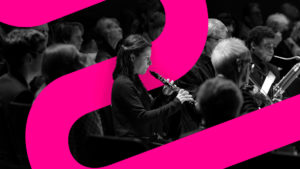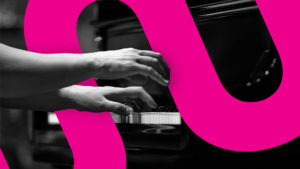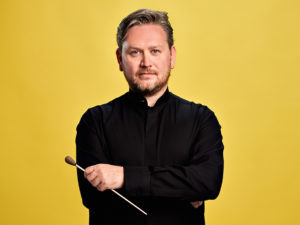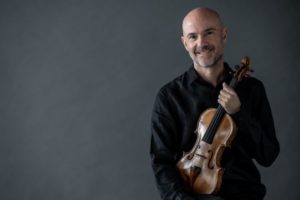
Mendelssohn and The Schumanns

Mendelssohn and The Schumanns
Robert Schumann (1810-1856)
Piano Concerto in A minor, Op.54
I Allegro affettuoso
II Intermezzo: Andantino grazioso
III Allegro vivace
“When I play Schubert”, Schumann wrote in 1829, “it is as if I were reading a composed novel by Jean Paul.” The music of Schubert and the novels of the German writer Jean Paul represented for Schumann the very essence of romantic expression for which he himself was always striving. Unlike Schubert, however, he felt that the traditional musical forms hampered the development of his ideas, and he therefore either modified them considerably or created new ones.
In this respect his Piano Concerto is particularly successful. The sonata form of the first and last movements imposed no serious restriction on Schumann’s romantic ideas and where it might have done, he adapted it to his needs. Thus he dispensed with the orchestral exposition in the first movement and made the solo instrument the protagonist right from the start. He also composed the cadenza as an integral part of the work and went far beyond the scope of the classical sonata form in his changes of time, mood and key.
The Intermezzo is a charming dialogue between soloist and orchestra, joined to the finale by quotations of the principal theme from the first movement. This short, evocative passage is a stroke of genius. It arouses our expectation with a few shadow-like fragments that, by contrast, add much to the brilliant start of the finale. Here the sonata form is almost obliterated by the abundance and exuberance of the themes, most of which the soloist claims for himself.
It seems incredible that this work with its very original structure should not have been conceived in a single flash of inspiration. In fact, the first movement was composed as a fantasy for piano and orchestra in 1841. The two other movements followed four years later – not as an afterthought, but as a realistion of the great expansive force inherent in the original one-movement fantasy.
© Stefan de Haan
Clara (Wieck) Schumann (1819-1896)
Three Romances Op. 22
Schumann was at her height with composition when she was in the middle of her career. In the modern-day, her songs and piano trios are a particular favourite, alongside her Three Romances for Violin and Piano. This work was composed in 1853 and was first premiered in 1855. Clara Schumann famously said that “women are not born to compose”, however during this period, she composed quite a few of her most famous works.
Three Romances for Violin and Piano was dedicated to close friend and virtuoso violinist, Joseph Joachim. Schumann and Joachim went on tour with this piece and they even played it before King George V of Hanover who absolutely loved the work. One critic said “All three pieces display an individual character conceived in a truly sincere manner and written in a delicate and fragrant hand.”
Even in the modern-day, this work is perhaps one of Clara’s most famous, there was a critic who wrote in 2013 that this work was “lush and poignant, they make one regret that Clara’s career as a composer became subordinate to her husband’s.”
The work is in three movements:
Romances were one of Clara Schumann’s favourite forms to compose in, which is perhaps why this particular work is so effective. The three movements are contrasting, exciting and bursting with character.
Ⓒ Alex Burns
Felix Mendelssohn (1809-1847)
Symphony No. 4 in A, ‘Italian’
I Allegro vivace
II Andante con moto
III Con moto moderato
IV Saltarello: Presto
When Schubert and Beethoven were still alive and before Mendelssohn was 14 years old, he composed a set of 12 string symphonies, intended for the musical evenings in his cultured family home. These symphonies are delightful, often original and always spontaneous compositions without the slightest sign of immaturity or any other imperfection suggesting that the composer was a child.
His next symphony, first numbered ‘13’ but scored for full orchestra, was composed many years later. Realising that the work was on a much larger scale than the early symphonies, he renamed it ‘First Symphony’, numbering those that followed accordingly. The Symphony in A major, Op. 90, is the fourth of these, and it was Mendelssohn himself who referred to it as his Italian Symphony.
An infant prodigy is not aware of dancing on a tightrope towards an abyss. In later life the realisation of the dangers implied in such a feat is liable to cause a crisis which can, and often does, destroy a promising career. In the case of Mendelssohn this crisis was aggravated by a lack of single-mindedness in composition, arising from his many varied talents and interests and, perhaps above all, from his cultured family background. As an adult he began to doubt the merits of the early compositions he had written so effortlessly, and this critical uncertainty also affected his later symphonies. For instance, he kept revising the Italian Symphony, always maintaining that it was incomplete, and he would not permit a performance of the work in Germany, although he had no objection to having it played in London. It is a near miracle that none of these negative factors show in his music. The Italian Symphony in its now accepted form sounds as fresh, spontaneous and original as the brilliant very early Octet for Strings or the splendid A Midsummer Night’s Dream Overture.
Mendelssohn spent the winter of 1831 in Rome and visited Naples the following summer. He worked on the Fourth Symphony while he was in Italy and finished the original version in Germany in March 1833. In May of that year Mendelssohn conducted the first performance at a concert of the Royal Philharmonic Society in London but it was not until 1849, two years after his death, that the symphony was first performed by the Leipzig Gewandhaus Orchestra in Germany.
The opening Allegro vivace fits comfortably into a somewhat updated first movement form, and the lively pulse of the running semiquavers even gathers speed in the coda. The Andante con moto was probably inspired by the music used for a progression of pilgrims that Mendelssohn heard in Naples. The gentle third movement has an ingenious trio for horns and bassoons, and the finale consists entirely of a ferocious Neapolitan dance called a Saltarello (from saltare – to jump). It is in the key of A minor and even ends quite unconventionally in that mode, without returning to its home key of A major.
© Stefan de Haan
Leader
Simon Blendis
Violin 1
Sijie Chen
Naomi Warburton
Nicoline Kraamwinkel
Ann Criscuolo
Martin Smith
Violin 2
Antonia Kesel
Gemma Sharples
Jayne Spencer
Lyrit Milgram
Rosemary Henbest
Viola
Sophie Renshaw
George White
Christopher Beckett
Claire Newton
Cello
Chris Murray
Daisy Vatalaro
Miriam Lowbury
Double Bass
Benjamin Russell
Catherine Elliott
Flute
Harry Winstanley
Emilia Zakrzewska
Oboe
Gareth Hulse
Katie Clemmow
Clarinet
Andrew Webster
Lewis Graham
Bassoon
Catriona McDermid
Íde Ní Chonaill
Horn
Mark Paine
Martin Grainger
Trumpet
Alan Thomas
Peter Wright
Timpani
Scott Bywater
CHIEF EXECUTIVE
Flynn Le Brocq
CONCERTS
Artistic Projects Manager Sophie Haynes
Orchestra Manager & Fixer Jason Weir
Artistic Projects Coordinator Alex Mackinder
DEVELOPMENT
Development Manager Tristen Hennigs
Fundraising & Operations Peter Wright
Fundraising Consultant Paul Hudson
Outreach & Evaluation Consultant Bec Britain
Honorary Chair – Friends of LMP Christine Robson
MARKETING
Senior Marketing & PR Manager Anna Bennett
Marketing and Development Coordinator Bethany Penny
Digital Marketing Manager Charles Lewis
EVENTS
Royal Event Manager Rachel Rae
Freelance Events Producer Sophie Branscombe
FINANCE
Bookkeeper Debbie Charles
Leader Debbie Beckerman & Keith Jones
Leader Raymond and Rosamund Calcraft
Co-Leader Michael Southwell
Violin 1.3 Liz and Alistair Milliken
Violin 1.4 currently not sponsored
Violin 1.5 Christine Robson
Violin 1.6 Della Brotherston
Violin 1.7currently not sponsored
Violin 1.8currently not sponsored
Violin 1.9 currently not sponsored
Associate First Violin currently not sponsored
Principal Second Violin currently not sponsored
Violin 2.2 The Angel Family
Violin 2.3 Mia and Keith Ball
Violin 2.4 Alastair Fraser
Violin 2.5 currently not sponsored
Violin 2.6 Catherine Shaw – Allbone and Trimit
Associate Second Violin currently not sponsored
Principal Viola Mark and Vanessa Petterson
Co-Principal Viola currently not sponsored
Viola 3 Gill Cox
Viola 4 currently not sponsored
Associate Viola currently not sponsored
Principal Cello Anonymous
Sub-Principal Cello Leslie Aarons
Cello 3 Gillian Noble
Cello 4 Richard Morgan
Associate Cello Colin and Helen Snart
Associate Cello currently not sponsored
Principal Double Bass John Clarke
Co-Principal Double Bass The Bristow Family
Principal Flute currently not sponsored
Sub-Principal Flute currently not sponsored
Principal Oboe Pat Sandry
Co-Principal Oboe currently not sponsored
Sub-Principal Oboe currently not sponsored
Principal Clarinet Deirdre Lea
Sub-Principal Clarinet Graham Harman
Principal Bassoon currently not sponsored
Sub Principal-Bassoon Barbara Tower
Principal Horn currently not sponsored
Sub-Principal Horn Chris Harman
Principal Trumpet Ishani Bhoola
Sub-Principal Trumpet Cynthia Harrod-Eagles
Principal Trombone currently not sponsored
Sub-Principal Trombone currently not sponsored
Principal Bass Trombone currently not sponsored
Principal Timpani Cynthia Harrod-Eagles
Principal Percussion currently not sponsored

The Ages of Mozart: Angela Hewitt
Friday 8 November 2024, 7.30pm
St. Martin-In-The-Fields
A whistle-stop tour of Mozart’s 35-year-long career with world-renowned pianist Angela Hewitt.
Louis Schwizgebel
piano

Louis Schwizgebel has been described as “a genuine virtuoso, a spirited young genius with real depth” (FonoForum) and an “insightful musician” (New York Times). He is praised repeatedly for his poise, elegance, imagination, expressive lyricism and crystalline articulation. He performs regularly in recital and with the finest orchestras across the globe and has received critical acclaim for his recordings.
In 2023/24, Schwizgebel’s highlights include a tour with the City of Birmingham Symphony Orchestra under the baton of Kazuki Yamada (Victoria Hall Geneva, Zurich Tonhalle, Casino Bern, KKL Lucerne) and concerts with the Tonkünstler-Orchester (performing at Vienna Musikverein), Oxford Philharmonic, Erfurt Philharmonic, Dortmunder Philharmoniker, Belgrade Philharmonic, Sao Paulo Symphony Orchestra, Royal Bangkok Symphony and Orchestre national de Metz (performing at the Amsterdam Concertgebouw) as well as Mozart play & conduct projects at the Puplinge Festival and with the Geneva International Orchestra at the Piano à Saint-Ursanne Festival.
In recent seasons, further highlights have included performances with the Philharmonia Orchestra, City of Birmingham Symphony, all BBC Orchestras, Royal Scottish National Symphony, Bavarian Radio Symphony, Frankfurt Radio Symphony, Bamberg Symphony, Orchestre National de France, Oslo Philharmonic, Danish National Symphony, Orchestre de la Suisse Romande, Tonhalle Orchestra Zurich, Sinfonieorchester Basel, Luzerner Sinfonieorchester, Orchestra della Svizzera italiana, Vienna Symphony, Cincinnati Symphony, Richmond Symphony, Sacramento Philharmonic, Utah Symphony, Oregon Symphony and Auckland Philharmonia.
In solo recital and chamber music, Schwizgebel performs regularly at the major festivals and halls including London’s Wigmore, Amsterdam’s Concertgebouw, Rheingau Festival, Klavierfest Ruhr, Lille Piano Festival, Septembre Musical de Montreux-Vevey and Singapore International Piano Festival. He has performed chamber music with the likes of Benjamin Beilman, Narek Hakhnazaryan, Renaud Capuçon and Alina Ibragimova. Finally, Schwizgebelhas worked with a wide range of conductors including Edward Gardner, Mirga Gražinytė-Tyla, Emmanuel Krivine, Nicholas Collon, Thierry Fischer, Charles Dutoit, Marek Janowski, Fabio Luisi, Lahav Shani, Robin Ticciati, Louis Langrée, John Wilson, James Gaffigan, Santtu Matias Rouvali, Ben Gernon, Elim Chan, Allondra della Parra, Michael Sanderling, VasilyPetrenko and Fabien Gabel.
Schwizgebel performs frequently in his native Switzerland; he has played in the major festivals such as Verbier, Lucerne and Gstaad and Meisterinterpreten series at Zurich Tonhalle. In 2014 he made his BBC Proms debut with an electrifying televised performance of Prokofiev Piano Concerto No. 1 and in 2018 at the Festival de Radio France in a televised performance of Gershwin Rhapsody in Blue.
Schwizgebel records for Aparté and his latest recording of Schubert Sonatas D845 and D958 was described as an “album of extraordinary precision” by Le Figaro. Previous releases include Saint-Saens Piano Concertos No. 2 and 5 with the BBC Symphony Orchestra, described as “gorgeously singing and wonderfully delicate” by BBC Music Magazine, and Beethoven Piano Concertos No. 1 and 2 with the London Philharmonic Orchestra hailed as a “beautifully nuanced account” by Gramophone.
Schwizgebel was born in 1987 in Geneva. He studied with Brigitte Meyer in Lausanne and Pascal Devoyon in Berlin, and then later at the Juilliard School with Emanuel Ax and Robert McDonald, and at London’s Royal Academy of Music with Pascal Nemirovski. At the age of seventeen he won the Geneva International Music Competition and, two years later, the Young Concert Artists International Auditions in New York. In 2012 he won second prize at the Leeds International Piano Competition and in 2013 he became a BBC New Generation Artist.
Jonathan Bloxham
conductor in residence and artistic advisor

After first debuting with the orchestra in 2020 this season Bloxham begins his tenure as Chief Conductor of the Nordwestdeutsche Philharmonie following in the footsteps of Andris Nelsons and Jonothan Heyward, and conducting concerts on two German tours as well as in their subscription season in Herford. In 2021 he recorded a CD of Strauss and Franck with the orchestra, described as “irresistible” by Musicweb International.
Conductor in Residence and Artistic Advisor of the London Mozart Players since 2022, Bloxham continues his close relationship with the orchestra this season, leading their concert series at St Martin-in-the-Fields and Fairfield Halls, and on a four-concert Swiss tour. Last season they celebrated the orchestra’s 75th birthday with a recreation of Mozart’s 1783 Vienna concert, and marked Croydon’s year as Borough of Culture with ambitious multi-disciplinary community projects.
Guest highlights of the past couple of seasons have included London Philharmonic, NDR Elbphilharmonie, Tokyo Symphony, Salzburg Mozarteumorchester, Halle Orchestra, BBC Symphony, Belgian National, Residentie Orkest, Tonkuenstlerorchester Wien at the Grafenegg Festival, Bonn Beethovenorchester, Trondheim Symphony and Philharmonic Brass (musicians from Berlin and Vienna Philharmonic orchestras) – many of these on multiple occasions. This season he returns to the BBC Symphony to conduct Wagner and Charles Ives, conducts the BBC Philharmonic in an opera gala, and debuts at the Enescu Festival with the Romanian National Radio Orchestra.
In 2024 Bloxham released a recording of Bach’s Keyboard Concertos with the Academy of St Martin in the Fields and Tianqi Du, which reached number one on the Apple Classical Top 100 global chart. He has also recorded works by Bruce Broughton with the London Symphony Orchestra (2024), as well as discs for future release with the BBC Scottish Symphony (2022) and London Mozart Players (2023).
Bloxham’s conducting career was launched in 2016 when he took up the Assistant Conductor position at the City of Birmingham Symphony Orchestra under Mirga Grazynte-Tyla. Before taking up conducting he enjoyed a prolific career as a cellist, performing regularly at the Wigmore Hall and across Europe, making his concerto debut at the Berlin Philharmonie in 2012. He learnt cello at the Yehudi Menuhin School, Royal College of Music and then at the Guildhall School of Music and Drama (Master’s), and later took conducting studies with Sian Edwards, Michael Seal, Nicolas Pasquet and Paavo Järvi.
For the past 16 years Bloxham has been Artistic Director of the Northern Chords Festival based in Newcastle-upon-Tyne, commissioning new works from young composers such as Vlad Maistorovici, Jack Sheen and Freya Waley Cohen. He returns to the Festival in 2025.
Simon Blendis
leader

Simon joined LMP as leader in 2014. He was a member of the Schubert Ensemble for twenty-three years, from 1995 until the group retired in 2018, leaving a legacy of over 80 commissions, 25 CD recordings and a large library of live performances on YouTube.
Simon is in demand as a guest-leader and has appeared in this role with most of the UK‘s major orchestras. He has also appeared as a guest-director with orchestras such as the Academy of St. Martin-in-the-Fields, the English Chamber Orchestra, the Amsterdam Sinfonietta and the Scottish Ensemble. Since 1999 he has shared the position of leader of Orchestra Ensemble Kanazawa in Japan, with whom he has recorded Vivaldi‘s Four Seasons for the Warner label. As a soloist he has appeared with orchestras including the Philharmonia Orchestra, the RPO and the CBSO.
During the Coronavirus lockdowns Simon spent time researching the light music legacy of legendary violinist Max Jaffa. The resulting CD of 25 lost or forgotten gems from this archive, entitled Love is Like a Violin, was released in July 2022 to critical acclaim, and has already garnered over 4 million streams.
Increasingly sought after as a teacher, Simon is a professor of violin at the Guildhall School of Music and Drama.
 The Ages of Mozart: Angela Hewitt
The Ages of Mozart: Angela Hewitt 